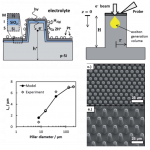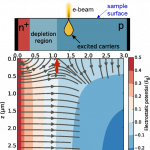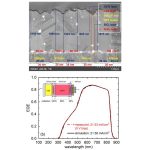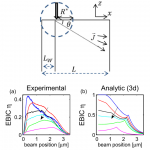Dean’s EMC conference paper is accepted for a platform presentation at the 59th EMC Conference (June 28-30, 2017; University of Notre Dame, South Bend, ID).
2017 07 * Dean gives a presentation at the International Conference (EMC).
Heterojunction Electronic Properties and Compositional Differences of CdCl2 Post-Treated CdTe Solar Cell (Dean Collett 1, Jeffery A. Aguiar 2,3, Brian v. Devener 4, Yohan Yoon 5,6, Paul Haney 6, Nikolai Zhitenev 6, Michael Scarpulla 1,3, Prakash Koirala 7, Robert W. Collins 7 and Heayoung Yoon 1).
1. Electrical and Computer Engineering, University of Utah, Salt Lake City, Utah.
2. Fuel Design and Development Department, Idaho National Laboratory, Idaho Falls, Idaho.
3. Department of Materials Science and Engineering, University of Utah, Salt Lake City, Utah.
4. Utah Nanofab, University of Utah, Salt Lake City, Utah.
5. Maryland NanoCenter, University of Maryland, College Park, Maryland.
6. Center for Nanoscale Science and Technology, National Institute of Standards and Technology, Gaithersburg, Maryland.
7. Department of Physics and Astronomy, Center for Photovoltaics Innovation and Commercialization, University of Toledo, Toledo, Ohio



 “Deconvoluting the influences of 3D structure on the performance of photoelectrodes for solar-driven water splitting”, D. Esposito1,2, Y. Lee1,3, H. Yoon1,3, P. Haney1, N. Labrador2, T. Moffat1, A. Talin4, and V. Szalai1, Sustainable Energy Fuels 1, 154, 2017.
“Deconvoluting the influences of 3D structure on the performance of photoelectrodes for solar-driven water splitting”, D. Esposito1,2, Y. Lee1,3, H. Yoon1,3, P. Haney1, N. Labrador2, T. Moffat1, A. Talin4, and V. Szalai1, Sustainable Energy Fuels 1, 154, 2017.



